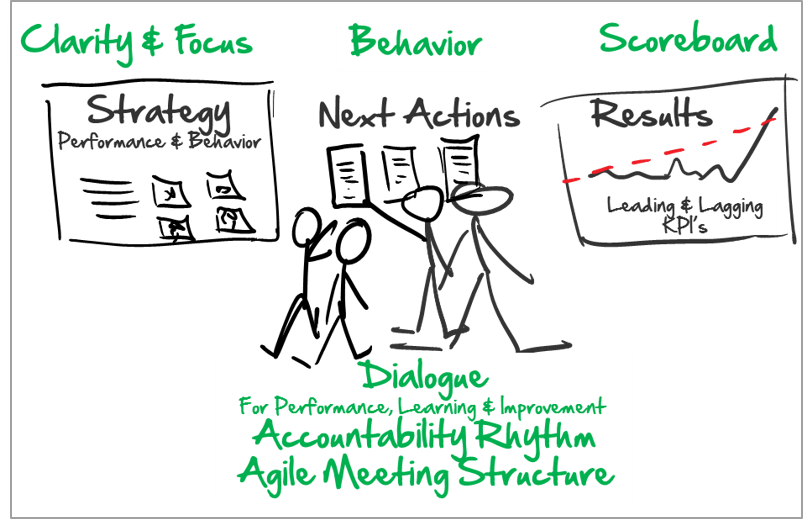Situation
“Our meetings are long, boring and unproductive. And we need to be an example for the rest of the organization. We don’t want an ‘of-the-shelf-training’. We know the basics, but now we need to improve this in real life.”
There was only one type of meeting in which administrative items, tactical decisions, creative brainstorms, strategic analysis and personal conversations were combined in one big ‘meeting-stew’. Short-term fire fighting usually prevailed, more strategic subjects were mostly postponed.
The executive team of a large telco wanted to eliminate waste and frustration in their meetings and create an environment of engagement and passion with interesting and relevant meetings as the center of their team and of the organization. The CEO called Performance-People for help.
Approach
After observing a meeting we gave our feedback: both behavior and structure needed to improve.
Meeting Behavior – In a short workshop we discussed effective meeting behavior, Emotional Intelligence in the team, and both positive and confronting feedback was given. We discussed frustrations, the underlying needs and how these could be addressed in the meetings. Collectively a list (un)desired meeting behavior was defined and signed to express commitment. After a brainstorm how to support positive behavior they also decided on a symbolic €2 fee for each infringement of the new meeting rules – to be donated to charity. Performance-People agreed to observe the coming meetings and give feedback at the end of the meeting to make sure agreements were implemented and desired behavior became a habit.
Meeting Structure – Together a new, coherent meeting structure was defined with separate meetings for separate subjects – each with their own frequency, participants, input, preparation, agenda and output.
Goals & Key Performance Indicators (KPI’s) – To assure result orientation we analyzed the Plan-Do-Check-Act-cyclus for the team’s most important themes. Points to improve were:
- Translate strategic goals to concrete weekplans, with reserved time blocks in the agenda
- Agree on clear KPI’s for each goal: when is this a success?
- Visualize and simplify progress reports: clear basis for discussion and corrective action focused on the root cause
- Action- and Decision List that is updated during the meeting and openly accessible for all
Results
A fresh pair of eyes helped the team become aware of their meeting behavior and changed this for the positive. It became easier to give each other feedback. The atmosphere become more open, fun and effective. The meeting structure and KPI’s gave clarity and promoted accountability. The results spread in the organization as the executive team members also started to use this approach in their own teams.

